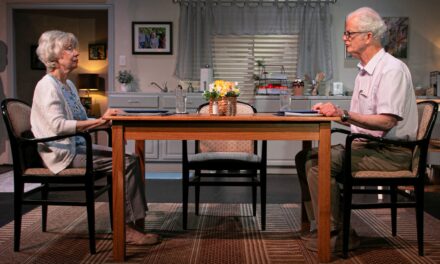Appearing in one of the Brevard Music Center‘s faculty chamber music recitals, Andrés Cárdenes and Bruce Murray performed as though their violin/piano duo had been fore-ordained by Euterpe, the Greek muse generally associated with music. They are that close in musical thought and expression.
Cárdenes is not simply a violinist, nor even simply a concertmaster (Pittsburgh Symphony Orchestra) and an increasingly-sought-after soloist. He is also a distinguished teacher at Carnegie Mellon University in the tradition of his mentor Josef Gingold. But foremost he is a musician, so complete that it is not surprising that a conducting career is now developing.
Murray is not simply a pianist. He is also a distinguished educator and administrator, formerly Director of the School of Music at the University of Alabama and now Artistic Administrator and Dean of Brevard Music Center. But foremost he is a musician, one who produces superior performances in solo recital, chamber collaborations and concerto appearances so often that he makes it look easy.
The two bring to their duo a common element in the depth of their intellectual understanding of the repertoire. They are also similar temperamentally; both have on-stage demeanors with few gestures and no visible signs of emotion. But they bring passion to their performances. Their bodies may be almost stationary, their arm motions may be the minimum needed to physically produce the music, but their hearts are filled with fire and ice, as called for by the music.
Mozart’s Sonata for Piano and Violin in Bb has many subtle tempo changes and caesuras at which the players, without even trading glances, were totally locked in. The sense of ensemble was complete. Paul Hindemith’s Sonata in E for Violin and Piano has two movements with typical Hindemith tempo markings in German: Ruhig Bewegt “tranquilly moving” and Langsam “Slowly”. The middle section of the Langsam is anything but slow, with a great sense of agitation. This is a pleasing work, more audience-friendly than some of Hindemith.
The third work of the evening was “Chant d’hiver” (Winter Song), composed by violin virtuoso Eugène Ysaÿe. The piece assigns very different roles to the piano and the violin. The piano delivers a sequence of rising chords that form an expressionistic harmonic underpinning, setting the mood of winter. Above that accompaniment is a beautiful and sometimes virtuosic violin solo, including passages employing harmonics and sul ponticello playing.
Following intermission came the evening’s blockbuster: Sergei Prokofiev’s Sonata for Violin and Piano in D, Op. 94b. The second movement Scherzo was delivered by Cárdenes and Murray as a rambunctious romp, irreverent and impish. After a beautiful third movement Andante, the duo once again “let ’er rip” in a strong-pulsed Brio final movement. A piano passage that sounds like a Hanon exercise moving up stepwise suddenly became a riff that reminded one of the troika ride taken by Lieutenant Kijé.
The audience at Brevard College’s Porter Center was rewarded with dessert: an encore of Fritz Kreisler’s arrangement of Ignasy Paderewski’s “Melody.” The audience had been attentive and respectful beyond what is customarily seen, perhaps in part attributable to the BMC students attending the event. But I attribute it in no small measure to the intensity of musical communication that the duo offered. There was much to absorb from their performance of all four programmed pieces, and much to be respectful about.












